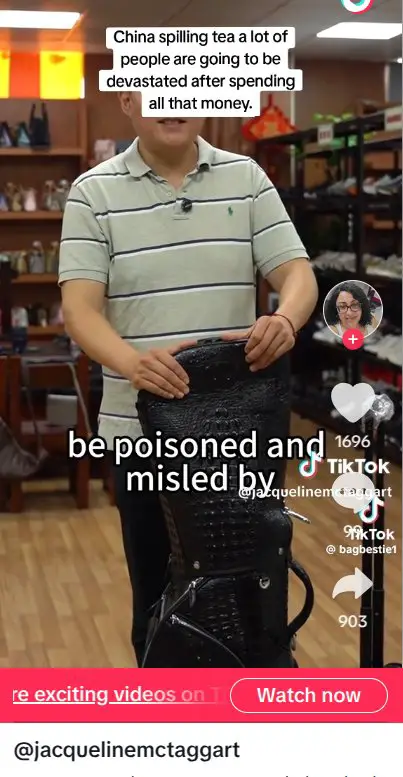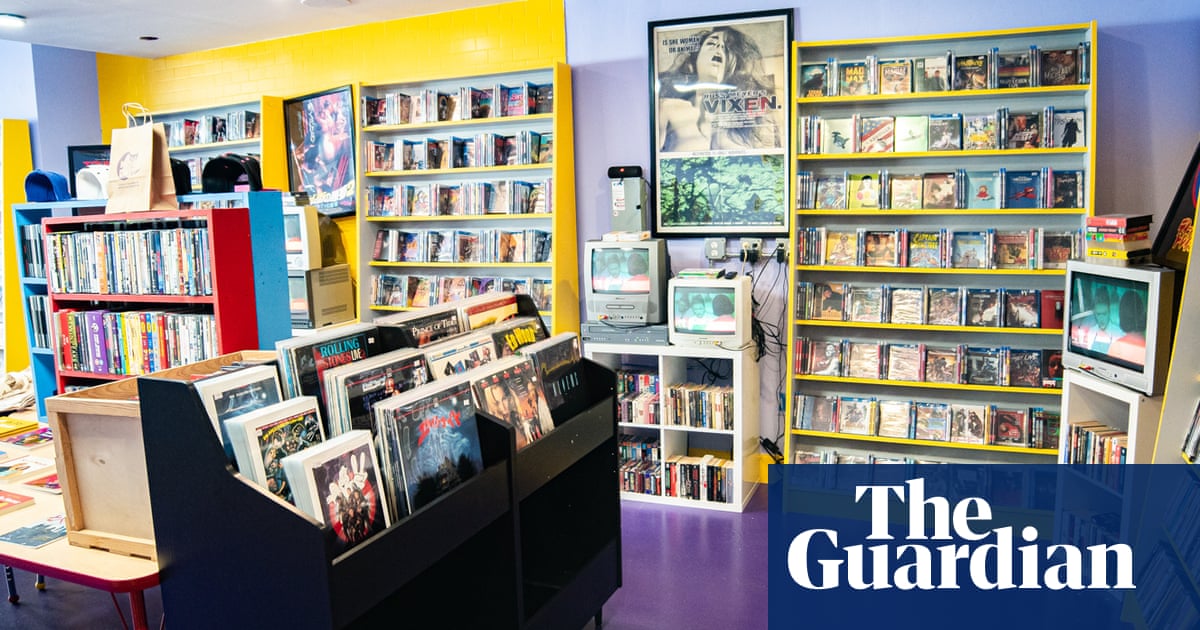In an age where “luxury” is as much about prestige as it is about the price tag, Chinese manufacturers are throwing a wrench into the finely oiled machine of global brand mystique. Yes, you heard it right—the factories behind your favorite luxury brands are now spilling the tea, and the revelations are as eye-opening as they are amusing. Let’s dive into the viral TikTok videos that are forcing us to rethink what it really means to splurge.
1. The “Made in China, Pretend It’s Italy” Scandal
You’ve probably spent a small fortune on a designer handbag, convinced that paying a premium price was a reflection of craftsmanship, heritage, and exclusivity. However, one TikTok video is turning that notion on its head by pointing out a glaring little secret: more than 80% of these so-called luxury bags are made in China. But wait—it gets better. These bags are often shipped to Italy or France, where their logos are slapped on, and voilà—your Hermes Birkin is now a product of “Made in Italy.”
@jacquelinemctaggart wow can you image some people hundreds even thousands of dollars on these bags thinking they are buying and original from a specific brand and in fact it is original but from China..seems a lot of people depends on China for their business. if this is true then a lot of people have been misled. He actually telling you the Hermes bag was made by his company. #hermesbirkin #luxurybags #madeinchina #madeinusa #madeinitaly #thetruth #truthhurts
♬ original sound – Jacqueline mctaggart
The video cleverly asks: Would you still want a $12,000 bag if you knew it came straight from a Chinese factory? Or, perhaps, would it be more comforting to know that the same bag—manufactured in the same factory—could be snagged for a few hundred bucks elsewhere?
The commenters, of course, had a field day with this revelation. One particularly sage observer quipped, “The Chinese just said ‘well, since ya wanna be real.’” How delightful to learn that the so-called “luxury” industry is built on a foundation of manufactured exclusivity, carefully designed to make you feel superior for having paid for something that wasn’t quite as rare as you thought.
2. Chinese Factories: Your New Luxury Direct Supplier
Now that we’ve gotten over the shock of Chinese factories making the bags we’ve all been lusting after, it turns out there’s even more going on. Another TikTok video reveals how Chinese manufacturers are stepping out of the shadows and going straight to the consumer. That’s right—these manufacturers, who have long supplied major global brands, are now offering their products directly to consumers at a fraction of the price.
@sheisimanib Replying to @Hey Girl The manufacturers are the GOAT right now 😂 #china #manufacturing #smallbusiness
♬ original sound – Imani B. 🛫
It seems that all those tariffs and trade wars, which the media loves to debate, have inadvertently opened up a path for Chinese factories to sidestep the middlemen and bring high-end goods to your door, unfiltered. The video points out that the Chinese manufacturers are no longer content to just make your favorite Lululemon leggings or Chanel beauty products; they’re now selling them directly to you for a fraction of what you’d pay through a middleman. Because, as one commenter wisely put it, “Getting into a trade war with someone who makes all your stuff is like yelling at someone who handles your food.”
Now, instead of spending $100 on leggings, you can pay a mere $5 for the same product. One would almost think that these companies are making a killing by not having to inflate prices with a hefty markup.
3. The For-You Page is Now a Chinese Factory Showcase
You thought your TikTok For-You Page (FYP) was for dance challenges and viral memes, but now it’s a window into the wild world of Chinese factories exposing the truth behind luxury products. Videos showing how everyday items—like Lululemon leggings or Ralph Lauren shirts—are made in China and sold at a fraction of the price are flooding the FYP.
@themodernmentalmom Keep spilling that tea girly pop #china #chinatiktok #tea #capitalism
♬ original sound – themodernmentalmom
But it’s not just clothes. The video also touches on the emergence of Chinese cars, which, according to some enthusiastic commenters, are more advanced in terms of technology and comfort than their U.S. counterparts. Apparently, while the U.S. bans Chinese cars to avoid competition, the rest of the world is benefiting from innovative and affordable vehicles. Who knew?
In true TikTok fashion, the comment section is where all the best lines are dropped. “I saw ONE comment about these videos and then suddenly my FYP is just full of Chinese factories exposing rich companies,” one user noted. Well, if you’re looking for a deep dive into the realities of global trade, your FYP has you covered now.
4. The Unmasking of Luxury Brand Suppliers
Perhaps the most jaw-dropping of all these TikTok revelations is the deep dive into the suppliers behind your beloved luxury brands. As it turns out, brands like Nike, Ralph Lauren, and Hugo Boss are all tied to some of the same factories that churn out products for many of the lower-cost alternatives.
@lunasourcingchina Supplier behind Ralph Lauren 👔#sourcingtips #sourcingagent #yiwuagent #yiwuminigoods #yiwumarkets #Lunasourcingchina #chinasource #ralphlauren #ralphlaurenaesthetic #hm #wovenshirt #shirt #luxurybrand #fashion #fyp #tkrefugee #clothingfactory #factory#chinashipping #wholesale#garmentfactory #alibaba #directfactory
♬ original sound – LunaSourcingChina
The video pulls back the curtain on companies like Leentai Group and ESCO Group, which supply to major luxury brands. These are some of the largest factories in the world, responsible for the shirts, shoes, and accessories that you pay top dollar for. The kicker? The profit margins for these luxury brands are outrageous, given that they source their products from the same factories that make budget-friendly alternatives. So, the next time you buy that $200 Ralph Lauren shirt, just remember—it’s very likely that the same shirt could be purchased directly from the factory for much less.
One commenter perfectly summed it up with: “This whole ‘luxury’ brand idea is built on a lie.” Honestly, who can argue with that? When you’re paying hundreds or even thousands of dollars for items that are essentially made in the same places as lower-priced alternatives, it’s hard not to feel duped.
In Conclusion: The New Age of Luxury?
As these TikTok videos continue to circulate, it’s becoming clear that the lines between luxury and everyday goods are more blurred than ever. Chinese factories are no longer content to stay behind the scenes, quietly making products for big brands. They’re stepping into the limelight, exposing the inflated prices and the complex supply chains that keep luxury products overpriced.
So, parents, the next time you’re tempted to drop your kid’s college fund on a designer bag, remember this: you’re not paying for exclusivity—you’re paying for a brand. But don’t worry, you’ll still look just as fabulous with a $400 bag that comes directly from the same factory where the $12,000 version was made. And who knows? In a few years, you might be able to buy that same bag straight from the source for a fraction of the price. How’s that for a modern-day twist on the luxury industry?














